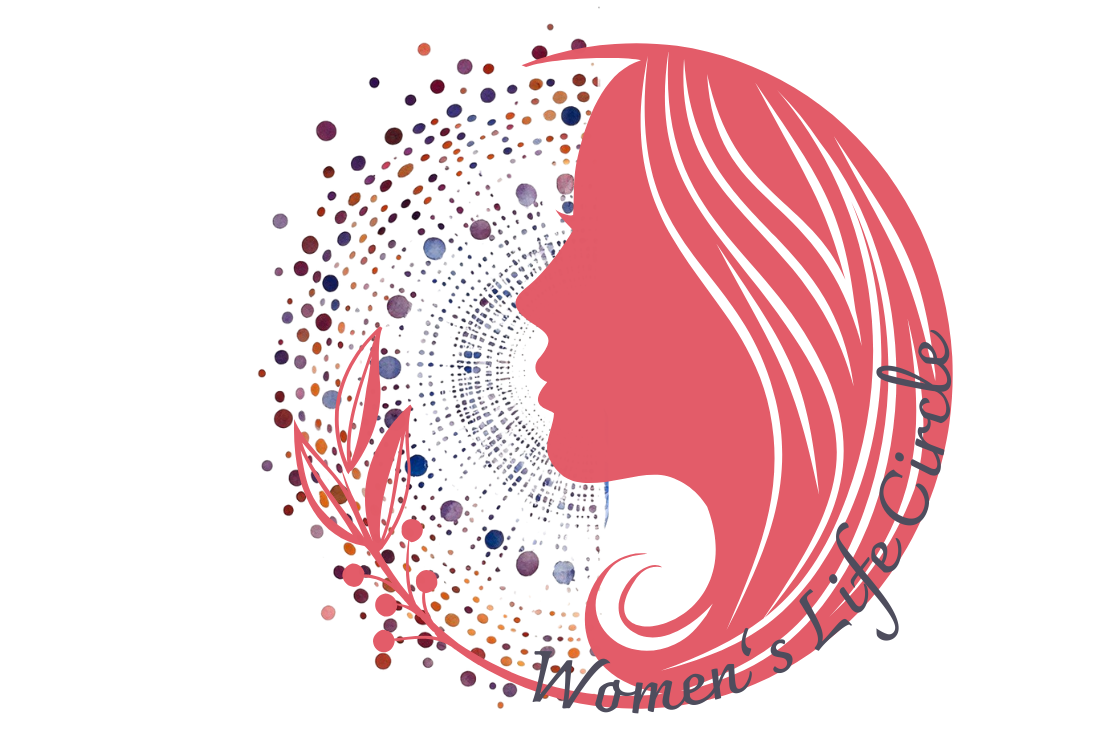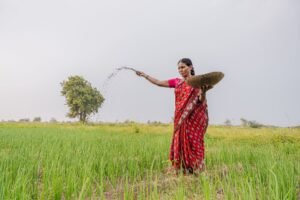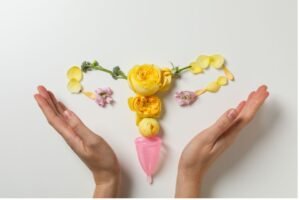Embracing Cycles, Vitality & Growth
Living in the Rhythm of Cycles
After the uncertain tides of puberty settle, a new rhythm emerges: the fertile years. This stage, stretching from the late teens into the 40s, is often described as the “flowering” of womanhood. The menstrual cycle becomes more regular, fertility is at its peak, and the body learns to live in harmony with repeating phases of renewal and release.
But these years are not defined by reproduction alone. Fertility is also symbolic—a period of creating careers, relationships, art, and new paths in life. The body becomes both a vessel of possibility and a teacher, offering monthly reminders of the deep connection between cycles of nature and cycles within.
The fertile years are often called the “spring and summer” of a woman’s life. It is the time when cycles stabilize, energy flows outward, and creativity takes many forms — whether in relationships, careers, projects, or motherhood. This is the stage when vitality shines and when women often build the foundations of their lives, dreams, and communities.
The Science of the Fertile Years
From a scientific perspective, the fertile years are defined by regular menstrual cycles and a balanced dance of hormones. Estrogen and progesterone guide the rhythms of fertility, while other hormones like FSH and LH ensure ovulation. These cycles don’t just prepare the body for pregnancy — they also influence mood, energy, and even the skin.
Ovulation occurs monthly, guided by FSH and LH.
Estrogen promotes energy, libido, and skin vitality.
Progesterone helps regulate mood and supports potential pregnancy.
Hormones also affect metabolism, sleep, and emotional balance
Beyond reproduction, these hormones influence:
Bone health (estrogen maintains density)
Skin and hair (often fuller and clearer during ovulation)
Mood and libido (energy peaks around mid-cycle)
The fertile years are the “biological prime,” but they are also years when stress, lifestyle, and diet can significantly affect long-term health.
Ancient Views of Fertility
Across cultures, fertility has always been revered as the essence of life and abundance. The fertile years were seen not only as the time for childbearing but also for embodying the creative and generative force of womanhood. Ancient myths, rituals, and symbols often celebrated women of this stage as powerful and life-giving.
Ancient Greece: Fertility was celebrated in festivals like Thesmophoria, honoring Demeter, goddess of agriculture and motherhood. Women’s cycles were linked to the fertility of the land itself
Ancient Egypt: Fertility amulets shaped like the goddess Taweret (hippopotamus deity) were worn for protection and abundance.
Andean cultures: Women of childbearing age were seen as keepers of life force, central to community continuity.
China: In Traditional Chinese Medicine (TCM), the fertile years were when “Kidney Qi” (vital energy) was abundant, allowing women to thrive in both physical and spiritual vitality
Fertility was never just about bearing children—it was about embodying abundance and creation.
The Body in the Fertile Years
The body during these years is usually at its strongest, most resilient, and adaptable. Yet this stage is not without its challenges — monthly hormonal shifts still influence how a woman feels, looks, and moves.
Muscles and bones are at their strongest, supporting an active life.
Some women experience PMS symptoms or cycle-related discomfort.
Fertility also comes with increased metabolic demands.
Skin: Often clearer, though PMS-related breakouts may appear before menstruation.
Hair: Thickens and shines under healthy estrogen levels.
Cycle: Regular menstruation, with variations unique to each woman.
Vitality: Energy fluctuates with the cycle; mid-cycle is often the most vibrant phase.
Emotional Landscape
The fertile years are often emotionally expansive. A woman may seek love, family, success, or self-discovery — or a combination of them all. Yet, with the outward flow of energy also comes the risk of burnout, stress, or emotional imbalance if she doesn’t nurture her inner world.
The fertile years can feel like a dance between expansion and introspection. Many women experience:
High energy & confidence during ovulation.
Intuition & creativity during the luteal and menstrual phases.
Mood swings or PMS when stress, diet, or hormones are imbalanced.
Stronger sense of identity and independence.
Desire for connection and intimacy.
Emotional resilience, balanced with cycle-related sensitivities.
Potential stress from career and family responsibilities.
How to cope:
Track cycles to understand emotional and physical rhythms.
Honor the body’s need for rest during menstruation.
Use creativity and self-expression to channel the cyclical energy.
Food & Nourishment
Nutrition during this stage fuels both fertility and long-term health. The foods a woman chooses now not only support hormonal balance but also lay the foundation for future well-being. Nutrition becomes a key ally during the fertile years.
Supportive foods:
Leafy greens, legumes, whole grains for steady energy.
Omega-3 rich foods (flax, chia, salmon) to balance inflammation and mood.
Iron and magnesium for menstrual support.
Avoid: Excess caffeine, refined sugars, and processed foods that worsen PMS.
Coffee & alcohol: In moderation, but best limited—both can disrupt hormonal balance and fertility.
Herbs & Natural Support
Herbs can be wonderful allies in supporting fertility and cycle health. They help regulate hormones, ease discomfort, and improve vitality.
Vitex (Chaste Tree): Regulates cycles and eases PMS [7].
Raspberry leaf: Continues to support uterine health.
- Chasteberry (Vitex) balances cycles and eases PMS.
Ashwagandha: Helps reduce stress and support reproductive vitality.
- Nettle nourishes with minerals and supports energy.
Ginger & turmeric: Anti-inflammatory, soothing for cramps.
- Maca root boosts stamina and libido.
Vitamins & Chinese Herbs
Vitamins and supplements can support reproductive health and prevent deficiencies. Traditional Chinese Medicine also offers gentle balancing herbs that support the body’s cycles.
Folate and iron for reproductive health.
Omega-3s for hormones and brain health.
B vitamins for energy and mood. (B6 & magnesium help with PMS symptoms)
Vitamin D & Folate (crucial for women planning pregnancy)
Chinese Herbs:
Dang Gui (Angelica Sinensis) – nourishes blood.
Bai Shao (White Peony) – calms cramps and balances Liver Qi.
Essential Oils & Aromas
Aromatherapy during this stage can support both sensuality and emotional balance. Scents can enhance mood, reduce stress, and connect a woman to her femininity.
Jasmine for passion and sensuality.
Geranium for hormonal balance.
Clary sage: Regulates hormones, supports relaxation.
Ylang-ylang: Enhances sensuality and reduces stress.
Lavender: A universal calming oil.
Movement, Meditation & Breath
The body thrives on movement during this stage. Exercise strengthens not only the body but also supports mood, energy, and hormonal balance. Meditation and breathwork help balance the intensity of an active life.
Cycle-aware movement:
High-energy exercise (running, HIIT, dancing) during follicular/ovulation phases.
Gentle yoga and stretching during luteal/menstrual phases.
Meditation: Journaling and mindfulness during menstruation to connect with inner wisdom.
The Right Environment
Fertile years often bring a fast-paced lifestyle. To remain balanced, women benefit from environments that nurture both their social and inner lives. In the fertile years, many women thrive in active, connected communities, but balance is essential:
Social: Friendships, romance, family, and work all intertwine.
Nature: Time outdoors supports hormonal and mental balance.
Quiet retreats: Taking time to rest during menstruation strengthens long-term vitality.
Clothing & Expression
Clothing becomes a powerful tool for self-expression in these years. It reflects confidence, individuality, and often the diverse roles a woman plays in her life.
Fashion becomes a form of empowerment and self-expression.
Natural fabrics remain important, especially during menstruation (to allow breathability).
Comfort + style: Clothes should reflect confidence, not pressure from trends.
- Clothes that celebrate, rather than hide, femininity.
Closing Reflection
The fertile years are often called the “prime of life,” but they are more than biology—they are a celebration of creativity in all its forms. Whether through children, art, love, or purpose, women in this stage embody abundance. To live in tune with cycles is to honor the ebb and flow of energy, the dance of vitality and rest. When embraced fully, these years become not only about fertility, but about the profound power to create life in every sense of the word.
References & Further Reading
Vlachou Panagiota Sophia
Certified Beekeeper | Specializing in Traditional Beekeeping & Natural Wellness Methods
Trained in Traditional Acupuncture – Academy of Traditional & Chinese Medicine
Member of the Beekeepers’ Association of Attica-Greece
Disclaimer: This article is for educational and informational purposes only. It is not intended to diagnose, treat, cure, or prevent any disease, and it does not substitute professional medical advice. Always consult a qualified healthcare professional before making any changes to your diet, lifestyle, or health practices.





